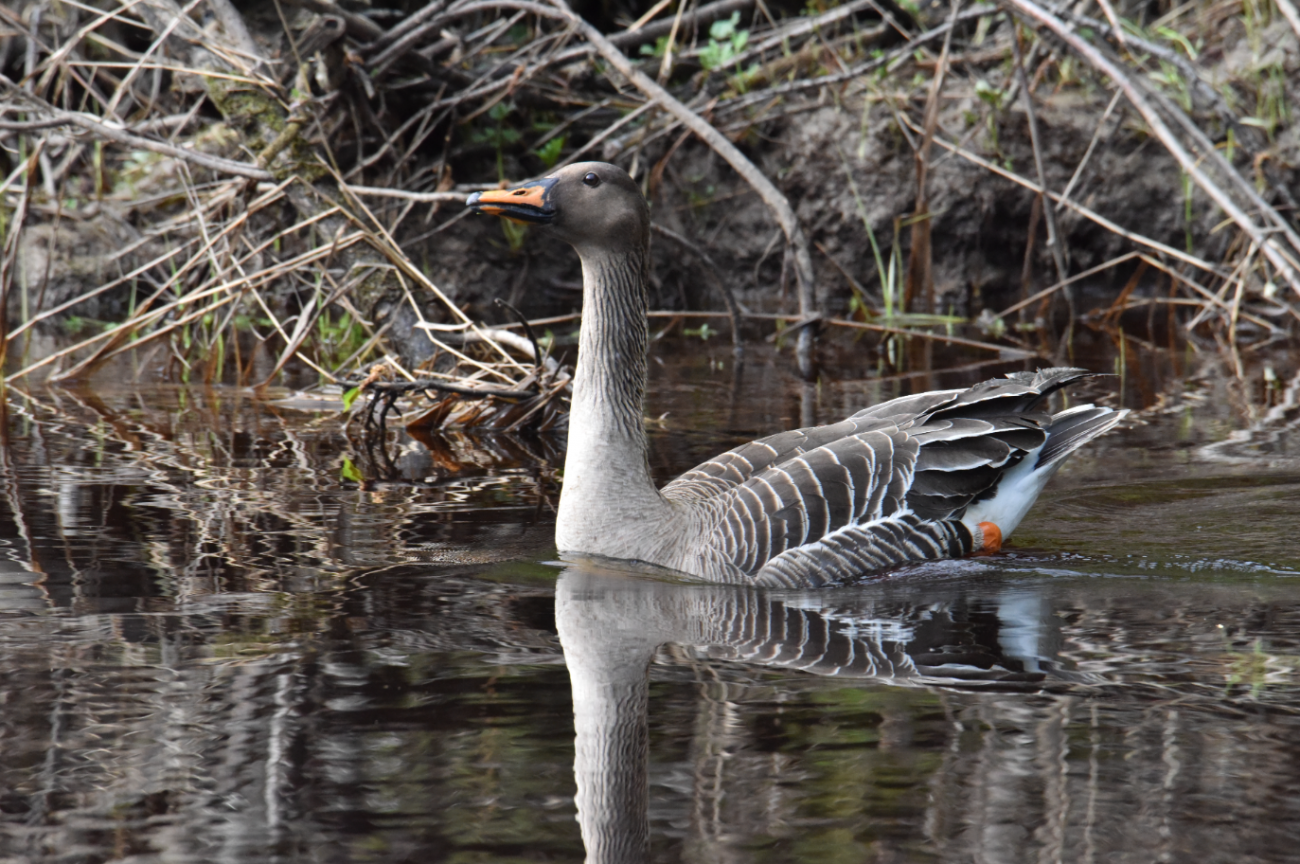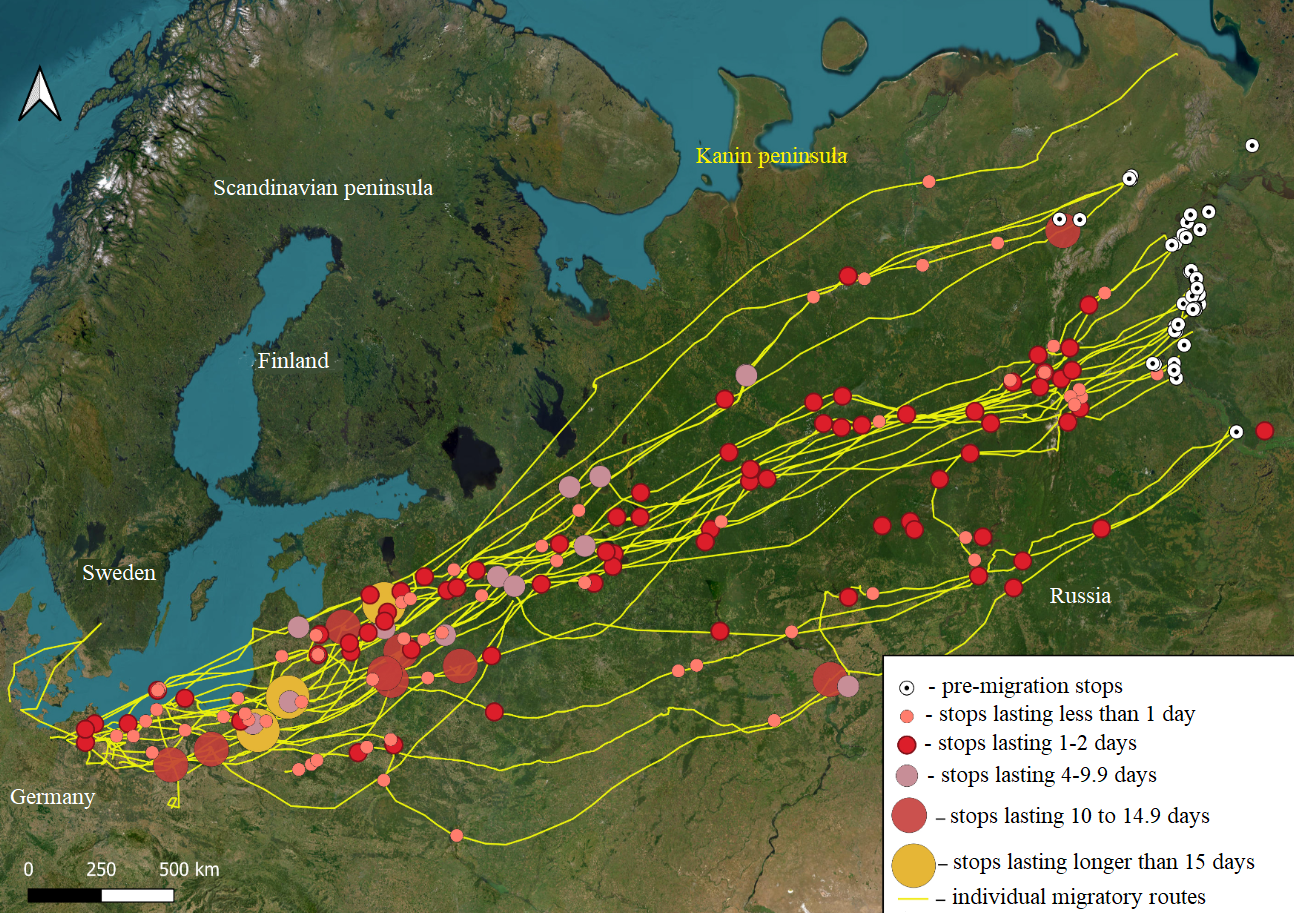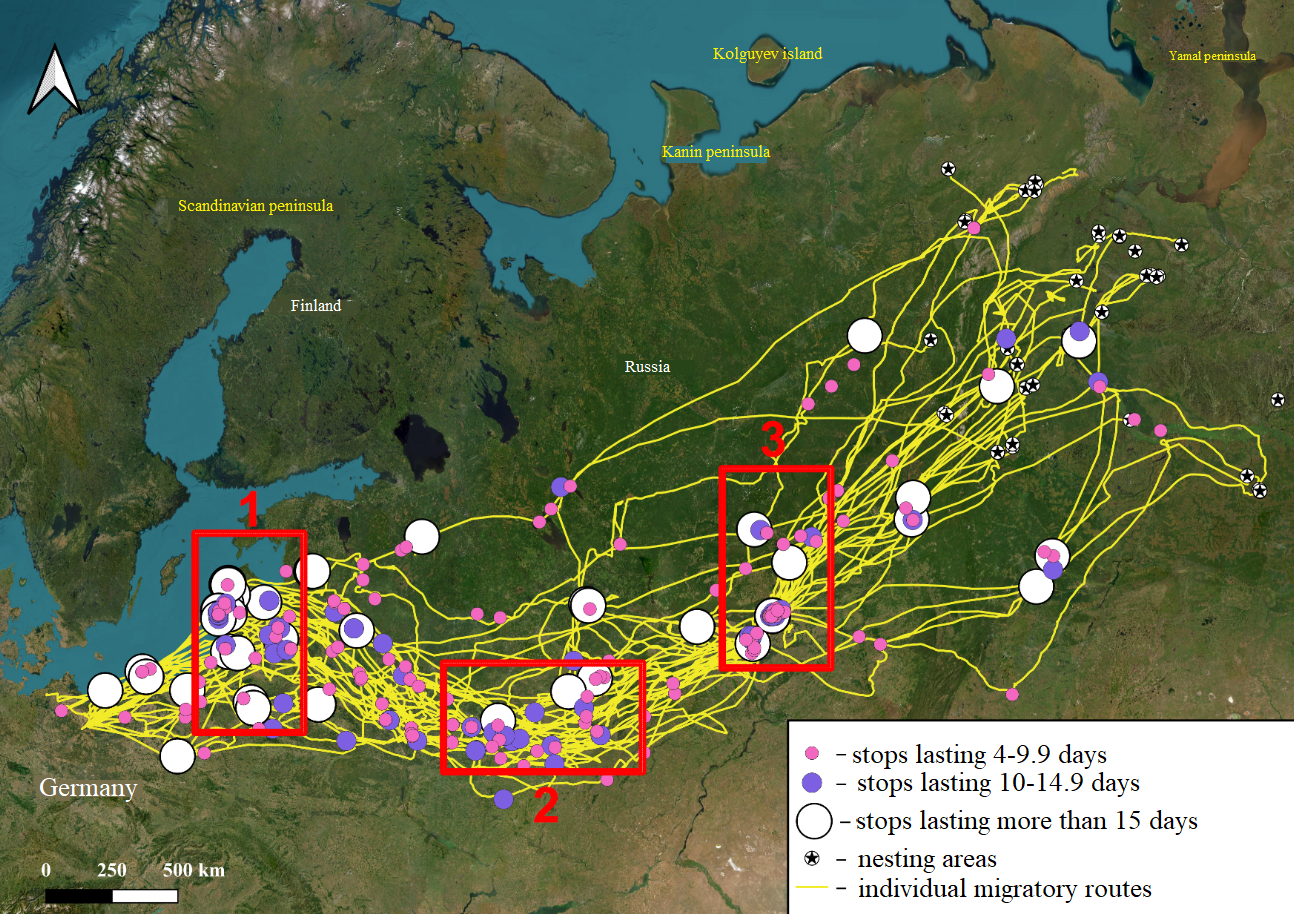
Modern technologies combined with remote sensing tools provide the level of detail needed to identify and characterize patterns in the use of space by birds, as well as to find critical habitats. The aim of the study was to identify the features of the migration routes of the forest bean geese (Anser fabalis fabalis) of the eastern subpopulation, listed in the Red Book of Russia, the patterns of the geographical distribution of migration stops, and to assess the effectiveness of specially protected natural areas. Birds of the eastern subpopulation nest in the European part of Russia and the western part of Western Siberia, and winter in northern Europe.

In 2019–2023, 45 spring and 36 autumn migration routes were tracked using GPS-GSM trackers. This allowed us to determine the phenology of migrations, the length of flights, and the geographical distribution of stops. An analysis of the geographical distribution of migration stops allows us to identify the most important regions for the species in the spring – the Baltic region, the Sviyago-Vyatka interfluve, and the central Volga region (Fig. 1).

Currently, only 15.3% of forest bean geese stopover sites have government protection, which is not sufficient to ensure the safety of the species. Taking into account the dynamics of region use during spring migration, it has been proposed to limit spring hunting for anseriformes, the use of which will reduce the likelihood of this rare subspecies being targeted. The discussion on the legitimacy of including the forest bean geese in the Red Book, which unfolded in 2017-2020, led to a compromise: partial inclusion of this subspecies in the list of protected taxa at the federal level. In this study, we show that the alternative protection measures discussed by opponents representing the hunting lobby do not work, and the subspecies must be included in the Red Book of Russia as a whole.
The results are published: Rosenfeld S.B., Strelnikov E.G., Volkov S.V. 2024. Migration routes and key stopovers of Anser fabalis fabalis (Anseriformes): an analysis of conservation issues // Nature Conservation Research. Reserve science. Vol. 9(4). P. 80–92.
